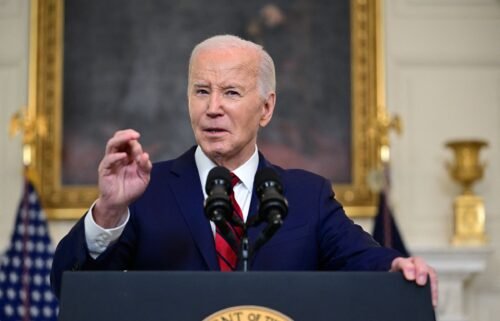How the Washington Post uses TikTok to engage with its audience

The Chinese-backed video app TikTok is popular among Gen Z for its lip-sync videos and comedy routines, but at least one newsroom has found a practical way to use it for brand promotion and to show users how the news is made.
The Washington Post’s video producer Dave Jorgenson sat down with Brian Stelter for this week’s Reliable Sources podcast to talk about the paper’s TikTok account, and how he has used it to showcase the action inside the newsroom.
“I’ve always found our newsroom is filled with a lot of really funny people, even if they’re kind of dorky and sort of nerdy,” he said. “That’s our humor. And so I sort of sought to reflect that humor on TikTok within all of our videos that we publish each day.”
Listen to the whole podcast here:
For the uninitiated, TikTok is a two-year old smartphone app that has taken the internet by storm, rivaling Instagram and Snapchat as a destination for short-form videos. Jorgenson compares it to the now-shuttered Vine, saying it’s the Twitter-owned app’s “great, great weird grandchild with a lot more to offer.” Users post lip-sync videos, comedy and dance routines that are 60 seconds or shorter. The app has been downloaded over 750 million times in the past year according to the New York Times, citing figures from the app analytics firm Sensor Tower.
The Washington Post launched its own account in May, two months after Jorgenson pitched the idea to his bosses. The goal, he told Stelter, is to use the account to build trust with TikTok’s young viewers and help them become familiar with the Post’s newsroom. The bio on the Post’s account says, simply, “We are a newsroom.”
“These are real reporters working very hard,” Jorgenson said. “And, you know, they’re actually pretty relatable.”
Jorgenson has produced more than 120 videos for the account, amassing 220,000 followers and more than 7.5 million “hearts,” or likes. The clips orient viewers to the Post’s reporters and editors, using humor to show them how the newsroom operates. One video shows Steven Rich, the database editor for the Post’s investigations unit, demonstrating how Freedom of Information Act (FOIA) requests work to the tune of a Justin Bieber remix.
He says each video takes roughly four hours to produce, including a half hour dedicated to engaging with commenters after it’s published. He says engagement with followers is “easily the most important part” of the process.
“You have to show that you understand what you did and show that you’re actually involved with the community,” Jorgenson said.
Jorgenson says that being the trusted face of the Post’s TikTok account is important. He usually appears in the first three seconds of video to tell viewers “what’s about to happen.” He says this also helps keep his audience’s attention.
TikTok’s breakneck growth has not been without obstacles. US lawmakers have warned that the app could pose a national security risk, and have called on regulators and intelligence agencies to probe its ties to China. But while the Post’s tech reporters have been covering that story, Jorgensen said that the government’s concerns have not factored in to how he does his job.
“I was hired to make content, so that’s what I focus on,” he said. “I just let them stay in their lane and I work on making funny TikToks.”




